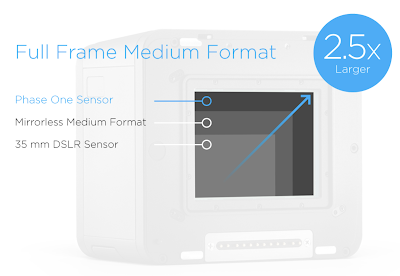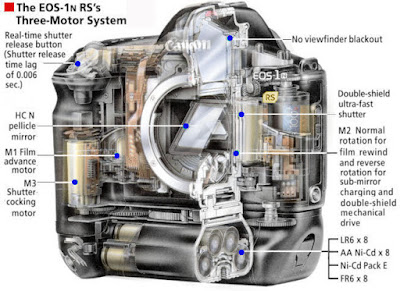Fujifilm Were Right to Call the GFX100 a "Large Format Camera"
After months of thought, it's time to say it: Fujifilm are right to call a 4433 format camera, "Large Format".
Fujifilm copped a lot of flak for using that term, but there are good reasons why they are ahead of the curve in pushing for nomenclature change. In fact, it wasn't so much Fujifilm but DPR who pushed them in this direction.
I draw your attention to DPR's write up of an interview with Fujifilm at CP+ in March 2019:
Highlights are my own. Quotation from the article, including photo, here considered "fair use" as we are critically examining the statements made in it.
As you can see it's DPR that keeps leading the discussion asking about "large formats". Later DPR states: "many of our questions at CP+ were focused on the GFX 100 and on Fujifilm's large-format strategy in general...". Fujifilm keep using the term "larger format" ("we need to stay ahead, using the larger format") but DPR keeps going back to "large format".
So it's not really Fujifilm leading a solo charge towards a change in nomenclature, but it's coming from the industry in general. It's a reflection of how influential videography is in the photography scene overall. Makers such as Arri tend to call larger than 35mm format sensors, "large format".
This comes from:
You can see that the number of sensors above 35mm format is gradually increasing, thus rendering the early 2000s era historical term "full frame" to hype this format increasingly obsolete. Keep in mind that this chart fails to include the 44 x 33 mm format of the Fujifilm GFX series, the Hasselblad X series, and the Pentax 645Z. Nor does it include the 45 x 30 mm sensor size of the Leica S series. You can see that in future, the variety of larger-than-35mm-format sensors is going to mushroom and become common. As that happens, the assertion that 35mm format is "full frame" is going to strike an increasing number of people as being archaic and Byzantine.
At the time of writing, these larger formats comprise only around 2-3% of the photography market, and probably less of the videography market, where smaller formats enjoy technical advantages. However, larger format sensors are becoming increasingly common, as their once astronomical prices fall. This trend will only continue in the future. Less than two decades ago, a Canon 35mm format sensor camera used to cost over $10 000, now they are a perfectly affordable mass-market commodity. Within the next decade, larger-than-35mm-format sensor cameras will probably start to comprise close to 10% of the market, after already having doubled from 1% to 2% within the last few years.
There are still some dinosaurs around who will object to the use of the term "large format" to describe a larger-than-35mm-format sensor, based on the claim that back last millennium, this was a film era term reserved for film sizes at least 4 x 5" (102 x 127 mm). That's all very well, but in the film era 35mm format used to be called "small format" (or miniature format) to distinguish it from medium and large format. If 35mm format in the digital age is "small format" what then is phone camera format? In the digital age, 35mm format is considered a relatively large format, which is shortly expected to reach 100+ MP in resolution.
This is quoted from the Canon website:
The time has come to recalibrate what we mean by small/medium/large format. It makes sense that small format today is something more like phone camera sensor format. Medium format is more like what you see from M4/3 to about 35mm format. The inclusion of M4/3 might surprise some but that format is going to hit 36MP in resolution over the coming decade. Keep in mind there is now a Samsung phone camera sensor capable of 104MP resolution, though in practice that sensor is really designed for optical performance at 26MP.
We should put things in perspective by comparing these sensor format sizes with the largest digital camera in the world, the LSST:
The large grey circle is the comparative size of the 640mm diameter digital sensor of the Large Synoptic Survey Telescope (LSST). You can see all too clearly that 35mm format is very much a crop format, massively subframe relative to the LSST sensor.
Put simply, things change over time. The film era definitions from last century of what small-medium-large format constitute have no enduring validity in the digital era. Digital sensor formats are no longer designed according to film era precedents as they used to be (this is how digital Micro Four-Thirds and 35mm Format got their names) with neither phone camera formats nor 4433 format having their film era equivalents. Some, however, will insist on being stuck in the past and refuse to acknowledge the disruptive nature of the evolutions in digital formats that are putting a massive wrecking ball through film era historical norms.






Comments
Post a Comment